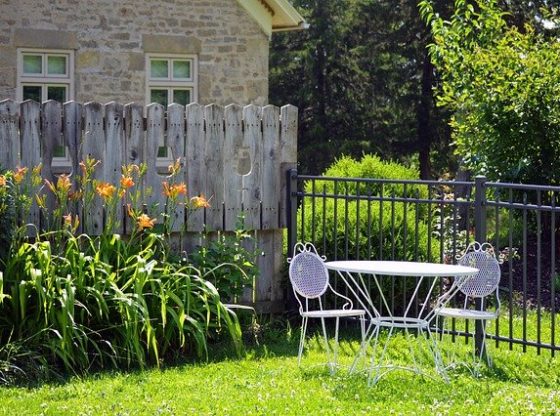When planning to redesign a garden, fencing might not be the first thing to consider on the list, but it should be on second or at least next top priority. It is the most practical way of keeping your plants safe and your garden secured from uninvited guests.
Defining garden or yard boundaries is another advantage. Before starting to build your fence, there are essential things you should know first. Here, we will be sharing the ten things you need to consider before deciding to purchase materials and start building a fence.
Know what you need
Before you start building a fence, ask first yourself what your purpose is behind installing it. If its goal is keeping your dog in the yard, you may opt for a basic chain-link garden fence. If you want something that can block noise or add more privacy, you can go for something tall and substantial.
There are many possible reasons you want to building a fence in your yard; no matter what, fences can function differently. But the primary step you can do is decide what you’re searching for in a fence that can work suitable for your needs.
Do your research
It would help if you asked first the homeowners or neighbourhood associations and municipal building code officials regarding agreements about natural fencing looks, stature, and material.
They have known better about the rules and check, which is the better-looking side of a fence to be set toward the property’s public face. Ask how far you can place a fence on your property.
Usually, a fence must be placed 2 to 8 inches from property lines and sidewalks. Also, see whether your fence project will be needing a building permit before installing it.
Check where your fence is facing.
In case you’re putting a privacy fence, ensure you know what direction a wooden fence should be adequately facing. Take note that the smooth, completed side of the fence should be facing the neighbour.
And the side with the rails and posts should be facing inside. This is the standard method to construct a garden fence. Your property will look better, and your neighbor will also appreciate how you put the fence’s details.
Decide on the materials.
A white picket fence is a classic type, yet before you purchase wood posts and whitewash, consider the responsibility you’re making. Wood fences may require time to finish or fix and rot after how many years installing them.
Why not consider a low-maintenance material for your garden fence like vinyl that offers the vibe of wood without the need for elbow grease. You can also choose other materials like aluminium, wrought iron, steel, and bamboo.
Combine fence types
Whenever the cost is an issue, then you can combine various types of fences. For instance, you can use a wood picket fencing installed at the front of your house and connect it to chain link fencing placed in the back.
Combining fences will not only help you reduce cost and save some paying for installation, but it also helps minimize the amount of fence that needs to be repainted. It can also add some style and interest to the landscape.
Dress it up
You can plan on giving your fence budget a touch of adding your style into your fence project. When your fence is set up, you can customize or personalize it by adding finials or decorative posts you like.
Depending on your home’s style, you might need to paint the fence a new shading. Why not consider planting flowers in front of your fence to add a more welcoming look to your home. For a new look, you can attach plant hanger hooks to your wood fence.
Calculate the cost
As per HomeAdvisor, you need to pay somewhere in the range of $1,673 and $3,983 to get a wooden fence installed in your garden. In every line foot, a wood fence costs around $17 to $45.
The lumber averages will likely cost $7 to $15 per foot while work goes from $10 to $30 per foot. The fence’s length, stature, and wood type are the primary considerations you need to calculate in placing a fence. You also need to add the costs of gates, hardware, and sealant.
Consider your climate
In chilly northern climates that experience ice, concrete anchors are essential for fence posts. They must secure the position 36 inches deep to try not to break in a cold front.
When it comes to warmer, damp climates, vinyl is your best material to use, as wood is helpless to water damage. In freezing areas, wood, bamboo, and metal walls are the most durable materials used for installing fences.
Plan the fence entryway
For your family’s safety and comfort, you can plan to have at least two pathways into a fenced area. Make sure that one of these is designed large enough to place your outdoor equipment. Venturing stones, pergolas, and other beautifying components can help demonstrate your entrance gate’s exact location.
Be a Good neighbor
Lastly, be open and discuss ahead with your neighbors about your fencing plans. Do whatever it takes not to hinder or block their ideas or views unnecessarily. A party fence can be assembled and shared by at least two neighbors. Such arrangements need to be recorded in writing and only after the property limits have been professionally decided.
In a Nutshell
Installing a fence in your garden or yard can be one of the beautiful home improvement projects you can do and invest in. As mentioned, it will add aesthetics to the entire exterior design of your home and add privacy and protection to your family.
To determine the best possible way of placing a fence at home, you can read the ten essential things we have shared above. Or, if you want, you can visit Storables.com for more creative ideas you can try in placing a fence on our garden.

